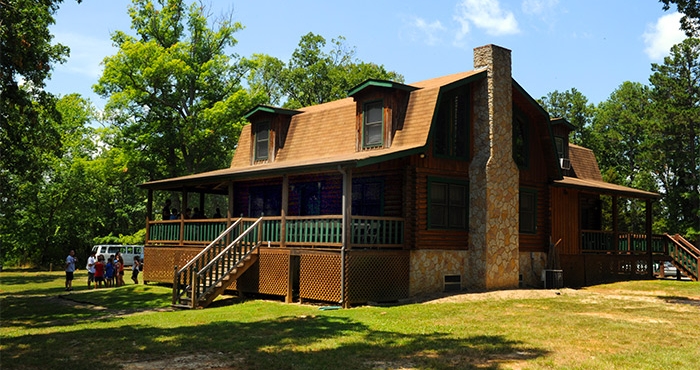
Otis K. Martin, Tribal Chief
Dorothy Stewart Crowe, Chairperson
The Sappony, formerly known as the Indians of Person County (NC), a Tribe of about 850 members, is located in a remote community on the North Carolina and Virginia border in Halifax County, Virginia and Person County, North Carolina. The area is referred to as the "High Plains" and is surrounded by two rivers and a creek making the location ideal as a safe haven for an isolated settlement during times of removal. The area was suitable for farming and raising tobacco, which became the Indian community’s economic subsistence. This community has been home to the Sappony for over 225 years. The Tribe settled into the area when most of the Sappony Indians were being driven north to join the Iroquois in New York. Since the Iroquois had been their traditional enemies for centuries, some Sappony chose to move to ‘High Plains’ – back to lands that were inhabited by the Sappony prior to European contact.
The Sappony have had a continuous relationship with the state of North Carolina for over 100 years with the start of their Indian school in 1888. The relationship with North Carolina was formalized in 1911 when official recognition was legislatively received. The early recognition enabled our community to establish the High Plains Indian School, which served the Tribe’s children. The state of Virginia also funded the school, which was an unusual gesture since the funding came at a time when Virginia was not recognizing the Indian population within its borders. In June of 2003, the Tribe changed its name in the North Carolina legislation from the Indians of Person County, a state-given name, to Sappony. This change emphasized tribal identity versus geographical location.
Community life centered around the Indian school and Indian church. The High Plains Indian School was closed in the early 1960’s; however, the church continues to occupy an important role in the community. Calvary Baptist Church, which serves the community today, is a continuation of the original Indian church established in 1850.
The Indian community is made up of seven family surnames, all with unique histories. A representative from each of the seven surnames serves on the Tribal Council which is led by a Tribal Chair and a Tribal Chief.
The Sappony hold an annual summer Youth Camp for their children as part of their Heritage Program, a 5k trail run, an art exhibit at the Kirby Gallery in Roxboro, NC to celebrate North Carolina’s American Indian Heritage Month in November and participate in a number of public events throughout the year.
For more information, please visit the official Sappony website at: www. sappony.org
For more detailed information, history, lesson plans and multi-media, please visit: http://www.learnnc.org/lp/editions/nc-american-indians/8.0


